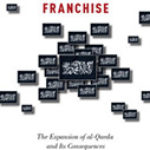CHALLENGING THE MAFIA MYSTIQUE: COSA NOSTRA FROM LEGITIMIZATION TO DENUNCIATION

Author: Rino Coluccello
Publisher: New York, NY: Palgrave Macmillan, 2016. 260p.
Reviewer: David A. Marvelli | January 2017
Rino Coluccello’s Challenging the Mafia Mystique weaves together history, sociological research, and popular literature to provide a deft analysis of the evolution and history of the mafia in Italy. While the origin of the mafia remains a mystery, Colucello demonstrates how the term mafia had come to be used throughout the eighteenth and nineteenth centuries in two different manners. The mafia was used to describe a Sicilian mentality rooted in its culture, and a criminal organization. Coluccello highlights how Sicilian politicians, journalists, authors, and academics would argue that mafia was a Sicilian mentality, in defense against perceived attacks on Sicilian culture from those—often non-Sicilian Italians—who suggested the mafia was a criminal organization. This “Sicilianist” defense, which embodied a romanticized Mafioso, became the dominant view in Sicily until the 1950s — contributing to a system actually protective of the criminal organization.
Drawing from Italian literary works, academic research, and government sources, Coluccello demonstrates the existence of the mafia prior to the unification of Italy in the early 1870s. In particular, he highlights the first known use of the term mafiusi in a play entitled, I mafiusi della Vicaria, and its association with a criminal group in 1861. In addition to associating the term mafiusi with criminals—albeit a prison group in Palermo—another significant contribution of the play was the characterization of the Mafioso as a fighter of abuse, and as the defender of the oppressed. It is this characterization that would later become the bedrock of the myth—or the mystique—of the mafia. The term mafioso would come to be viewed as a term to describe a “man of honor,” a Robin Hood character, who fights for the oppressed and is guided by natural law. These “men of honor” are bound together and to the community by omerta, or a code of silence.
The benevolent image of Mafiosi bound together by omerta—rather than being a criminal conspiracy—led many, according to Coluccello, to argue that a criminal organization called the mafia did not exist. However, for the fascist regime of Benito Mussolini, the mafia did exist; and an effort was made by Mussolini’s Prefect Cesare Mori to purge Sicily of the mafia in the late 1920s. Despite these efforts, it was not until the 1950s, after the re-emergence of the mafia in Sicily, that the popular image of the Mafioso—as a benevolent man of honor—began to be challenged. This change in the mafia image was brought about by numerous conflicts between the mafia and the state, and the public murders of trade unionists and members of the peasant movement. These events would alter public attitudes toward the mafia and bring about an anti-mafia movement, which continues to this day.
While Coluccello’s analysis is focused on the Sicilian mafia, Challenging the Mafia Mystique will certainly appeal to American mafia and organized crime scholars, since there are many parallels that can and have been made between the Italian and American experience with the mafia.
David A. Marvelli is a supervisory intelligence analyst for the Federal Bureau of Investigation. He has served as an adjunct faculty member with the National Intelligence University and the University of Mary Washington where he has taught courses on national security policy and transnational crime. He received his PhD from Rutgers University.
The views and opinions expressed herein are those of the author and do not necessarily reflect the views of the Federal Bureau of Investigation or the U.S. Government.


